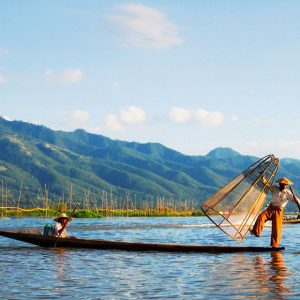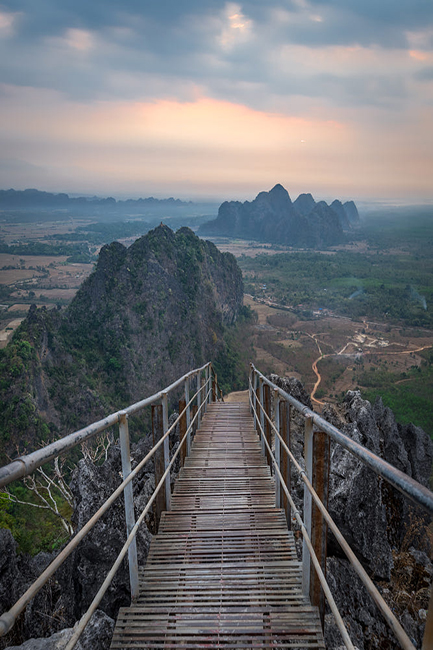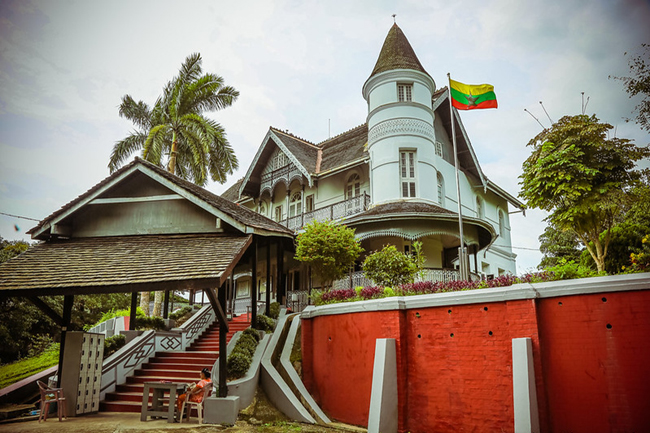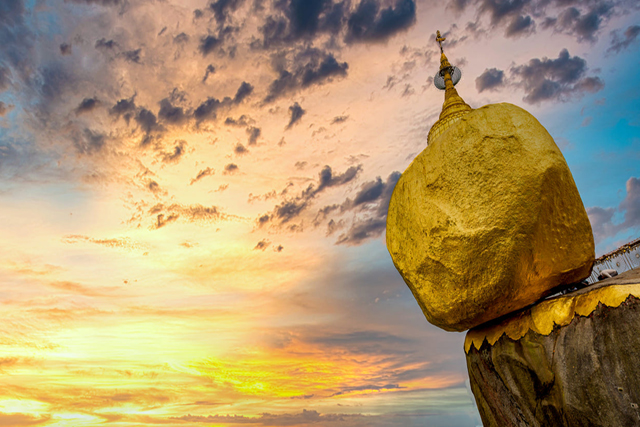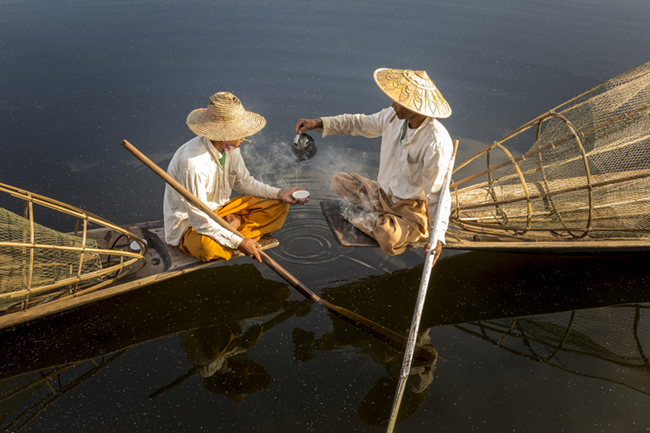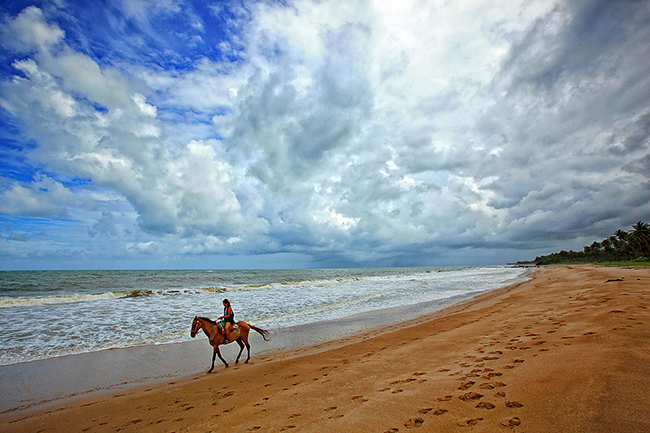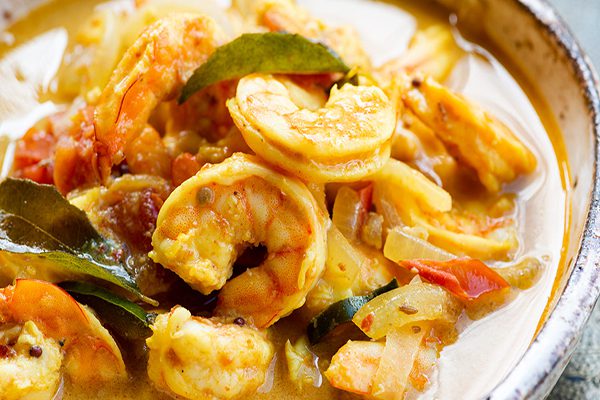Myanmar (formerly called Burma) is a beautiful country with spellbinding charms, located to the east of Thailand. On your tour to Myanmar, you will have a good time to discover a mixture of oriental cultures belonging to a great diversity of minorities, sumptuous beaches and Buddhist traditions. You will also be fascinated by so many surreal-looking beauties, and succumb to the sincerity of the Burmese people, who have preserved all the authenticity of their traditions. If you are planning to visit this home of bustling markets, numerous parks and lakes, here are the top things to know before travelling to Myanmar.
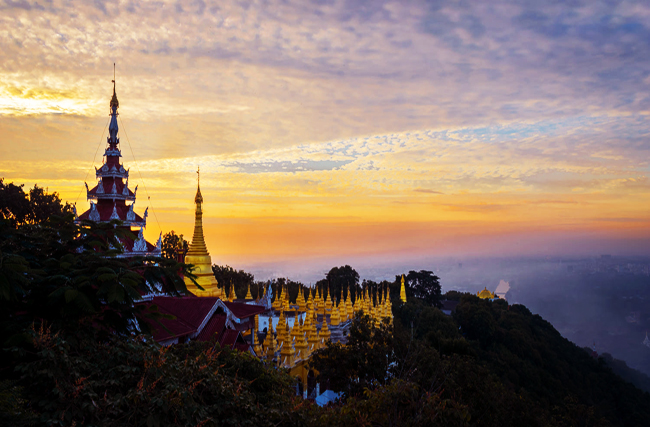
Majestic view from Mandalay Hill, Myanmar
1. Visa and Passport
To enter Myanmar, your passport must be valid for six months after your date of entry into Myanmar.
There are different types of visas for Myanmar:
| Type of visa / Authorization | Maximum duration of a stay | Period of validity | Price |
| E-visa | 28 days | 3 months | $50 |
| Visa on arrival | 28 days | 3 months | $76 |
The request can be made directly to the consular service or by mail. The compulsory documents are:
- Your passport
- This completed visa application form
- 2 identity photos
- $76 (by transfer or cash)
- A photocopy of your return air tickets
- Confirmation of your flights
- A stamped letter if you apply for your visa by post
2. Vaccinations
Before leaving for Myanmar, it is advisable to talk to your doctor. The consultation will help to balance the risk of contracting one of these diseases against the possible disadvantages of vaccination.
Here are the vaccines recommended in Myanmar – essential things to know before travelling to Myanmar:
- Universal vaccinations: diphtheria, tetanus, polio, whooping cough, and hepatitis B;
- Hepatitis A;
- Typhoid;
- Rabies (essential for long stays and in rural areas);
- Japanese encephalitis (recommended for long stays, especially in rice fields, during the monsoon period and after);
- Antimalarial treatment (highly recommended, even if malaria mainly affects rural areas).
3. Entry into Myanmar
How can I enter Myanmar?
By air
You can arrive at one of the three international airports: Yangon; Mandalay and Nay Pyi Taw.
By land
You can arrive through one of the following six land borders with India and Thailand:
- Tamu (Myanmar) – Moreh (India): This crossing point has been open since August 2018.
- Rihkhawdar (Myanmar) – Zokhawthar (India): This crossing point has been open since August 2018.
- Tachileik (Myanmar) – Mae Sai (Thailand): Please note that once in Tachileik, you will have to fly to Yangon or Mandalay, because bus connections are not allowed.
- Myawaddy (Myanmar) – Mae Sot (Thailand): It is the border crossing point most used by travelers, as it is on the tourist route between Bangkok and Yangon.
- Kawthaung (Myanmar) – Ranong (Thailand): This is the most southerly post, it is widely used by travelers in Thailand for visa-run from Phuket.
- Phunaron (Myanmar) – Htee Kee (Thailand): It is not possible to enter through this border post with an e-visa; only with a standard visa.
One of things to know before travelling to Myanmar: it is currently prohibited to cross the land borders with Laos, China, and Bangladesh.
5. Myanmar climate – The best time to visit Myanmar
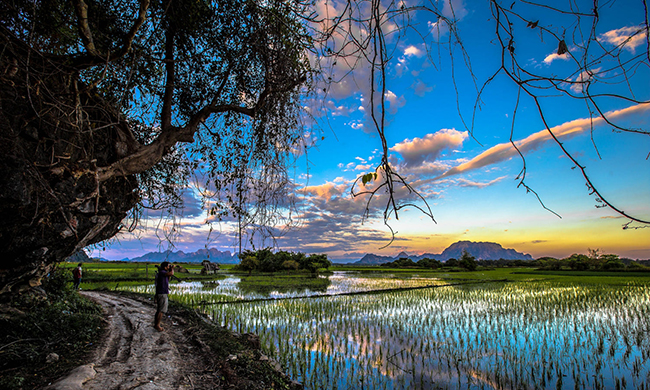
A fine weather day in Myanmar
Myanmar’s climate is generally divided into three seasons:
- October to March: dry and winter season
- March to May: hot summer season
- May to October: the wet and rainy season
It is important to choose the period you want to go to Myanmar well. Our advice: from November and February is the best time since the weather is dry and sunny and the heat is quite bearable to enjoy the visits. This will help you avoid the heavy rains that occur during the monsoon and the hot weather from March to May.
As this period is Myanmar’s peak tourist season, service options are more difficult due to the increased demand. So it’s best to try to book them in advance or you will have to pay more for the remaining options.
6. Telephone
Public telephone
In Myanmar (Burma), there are official state-run telephone centers that allow local or international calls. Payment is made in Dollars, Kyats are rarely accepted.
Many stores or hotels offer national and international calling services. They are recognizable by a small sign representing a telephone.
Cost: from $1/ minute of communication to Europe.
Cellphone
All mobile phones must be declared when entering Burmese territory. It is better and more economical for you to buy a SIM card on-site. In this case, you will need to unlock your phone beforehand. When purchasing your SIM card, you must provide a photocopy of your passport, visa and a photo ID.
7. Internet
Several hotels and restaurants in Myanmar have wifi, but the network is relatively slow. You can buy a data packet from Telenor and Ooredoo. It’s really cheap in Myanmar (1.5GB for 7 days at only $2). You can buy a SIM card at the airport or in tourist cities like Yangon, Mandalay, and Nay Pyi Taw.
8. Electricity
- Voltage: 230 volts
- Current frequency: 50 Hz
Wall sockets with two or three entrances. Therefore, you will need an adapter for American plugs (Plates) for your devices.
Besides, the network covers only certain parts of the Central and the Southern areas. So, you should prepare for frequent cuts.
9. Language
Burmese is the official language and among many languages in Myanmar. It is a little difficult to speak and decipher. But do not worry in the big cities and the tourist areas there is very often a transcription in English of the Burmese writing as for the names of streets, buildings, restaurants, etc. Moreover, in colonial inheritance, the Burmese speak a little bit English. Anyway, a smile is a universal language that the Burmese people master this time perfectly and effortlessly!
10. Important addresses
These addresses are among top things to know before travelling to Myanmar:
French Embassy
- Address: 102 Pyidaungsu Yeiktha Road – BP 858 – Rangoon
- Tel: [95] (1) 212 520/523/528/532 or 212 178
- Website: www.ambafrance-mm.org/
- Email: ambafrance.rangoun@diplomatie.gouv.fr
Embassy or Consulate of Switzerland
- Address: 79/80, Bahosi Housing Complex, Rue Wardan, Lanmadaw Tsp, Yangon,
- Telephone: +95 (0) 1 220.225
- Fax: +95 (0) 1 211.540
- Email: kyawtin@yangon.net.mm
11. Destinations to visit in Myanmar
Myanmar is not a country that can be discovered in just a few days because it is full of everything: city explorations, nature hikes, bicycle tours, and river tours. Discover the must-see destinations, top things to know before travelling to Myanmar!
Yangon (Rangoon)
Located in the south of the country, this city is the economic capital and the largest city of Myanmar. It is also known as the Garden City of the East with all its trees, parks and lakes.
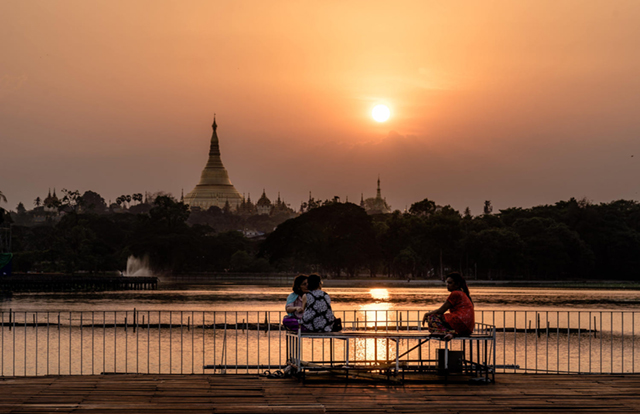
Yangon, the largest and a peaceful city of Myanmar
Yangon highlights:
– Shwedagon Pagoda: Known as the most sacred religious site in Myanmar (formerly Burma).
– Sule Pagoda: A pagoda, two thousand years old, located on a roundabout in the center of Rangoon.
– National Museum of Yangon: This museum has a large collection of ancient objects, ornaments, works of art, inscriptions and historical memorabilia, linked to the history, culture, and civilization of the Burmese.
Mandalay
This city is the last royal capital of the Kingdom of Myanmar, also the second capital of Myanmar as well as the second entry into the country when traveling through Mandalay International Airport.
Mandalay highlights:
– Mahamuni Pagoda: One of the most important places of Buddhism in Myanmar.
– Shwesandaw Pagoda: The biggest book in the world is here, a very nice place. It is the most popular place to watch the sunset in Bagan.
– Zegyo market: A typical Myanmar market. It is the oldest and most important market established in Mandalay.
– Shwenandaw Monastery: A very beautiful wooden monastery and the spiritual capital of the country. Open every day.
Inle Lake
This vast freshwater lake is located in the heart of Shan State in eastern Myanmar, which shares borders with Thailand and Laos. This lake is in the mountains so it is always cooler than in other regions. You can get there by road.
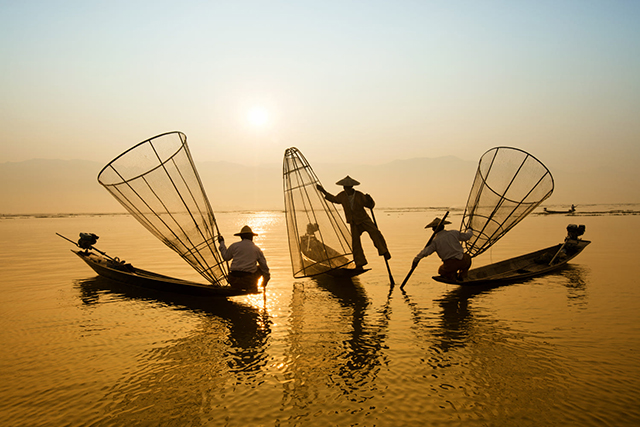
Fishing men catching fish toward the sunset
Inle Lake highlights:
– Nampan land market: Tourists can observe the nightlife on the locals’ lake there.
– Manufacturers of lotus and silk fabrics: A special craft in this region that you have to be very patient to create an item.
– Phaung Daw Oo pagoda: the largest around the lake. The Burmese come to pray there and put gold leaves on the central statues of the Buddhas
Bagan
Bagan was the capital of the First Empire of Myanmar after King Anawrahta ascended the throne in 1044 BC. It is known for its 2800 temples or pagodas.
Bagan highlights:
– Shwezigon Temple: The Shwesandaw Pagoda is a spectacular pagoda located northeast of old Bagan. For those interested in exploring the ancient structures, this is definitely not to be missed.
– Temple of Htilominlo: The temple is not large, but it is certainly one of the most beautiful in Bagan. Open every day.
– Temple of Ananda: the perfect temple. This temple is a cathedral-like structure with few equals in size and spiritual stature in Bagan.
12. Myanmar cuisine
Influenced by Indian, Chinese and Thai cuisines as well as by local ethnic groups, Burmese cuisine varies greatly depending on where you travel. The wide variety of ethnic groups in the country makes the cuisine diverse as well. Whether you are in Yangon, Mandalay or Inle Lake, you will go from surprise to surprise. Knowing well about the gastronomy culture is one of most important things to know before travelling to Myanmar. So, here are 5 dishes and drinks for you to take a look and make sure to enjoy at least once:
Mohinga
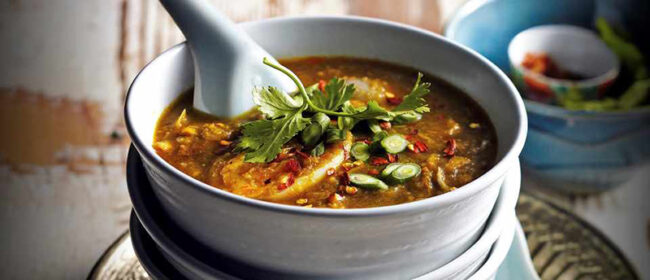
Mohinga soup
This is a soup of fish and vermicelli, playing an essential role in the cuisine of Myanmar, often considered the national dish. It is directly accessible in most of the country.
Laphet thoke
It is a salad of fermented tea leaves with fried garlic cloves, soybeans, dried shrimp, tomatoes, peanuts, and toasted sesame seeds.
Shan noodles
These noodles are wheat or rice noodles, served with chicken and roasted peanut powder. These Shan style noodle soups are one of Myanmar’s best-known dishes.
Other famous specialties and drinks
- The Burmese buffet consists of several small dishes based on meat or fish curries as well as vegetables.
- Burmese tea is black tea mixed with condensed milk and sugar. You should not miss a chance to taste it in a traditional tea house, the water is boiled until serving and the milk is concentrated.
13. Holidays and festivals in Myanmar
There are many religious festivals and festivals in Myanmar and most of them are determined on the basis of the Burmese lunar calendar. In order to experience true immersion in the Burmese culture complex, be sure to include it in your trip to Myanmar. Here is a list of famous celebrations and their information (place, date, activities,…).
| Name | Date |
| Independence Day | January 4th |
| Union Day | January 12th |
| Peasants Day | March 2nd |
| Armed Forces and Resistance Day | March 27th |
| Water Festival (Buddhist New Year) | Mid April (following the moon) |
| Vesak | May |
| Vassa (Buddhist Lent) | July |
| Martyrs Day | July 19th |
| Festival of Lights | October |
| National Holiday | November 14th |
| New year Karen | December |
14. Some tips you may need to know before travelling to Myanmar
– Myanmar has become an attractive travel destination for Southeast Asia, yet as a country that has only recently opened its doors to tourists for the past decade, traveling here means facing many challenges that you may not often meet in other countries in the region.
– It is advisable to avoid border areas (including official crossing points), especially those with Thailand, Laos, and China (but also India and Bangladesh) due to drug trafficking.
– Myanmar is still threatened by internal conflicts, and while many areas are completely closed to tourists without a permit, it’s good to know exactly where you shouldn’t be going.
– In political terms, the name Burma was seen as a remnant of old British colonialism, so it is changed to Myanmar which is being used. Other names have also been changed for the same reason, this is the case of Yangon (formerly Rangoon). However, for tourism, “trip to Burma” looks like “trip to Myanmar”, these 2 names are used alternately.
– 80% of the population is Theravada Buddhist. You should be careful with your clothes and behavior when visiting religious places and talking with monks. Here are some notes for you before travelling to Myanmar:
- Show respect: Turn off cell phones, remove headphones, lower your voice, avoid inappropriate conversations.
- No smoking or chewing gums.
- Take off your hat and shoes and leave them outside the main worship area.
- Respect the Buddha Statues: never touch them; don’t point your finger; stand up when monks or nuns enter.
Read more:
- Top Family Destinations in Myanmar
- Essential travel guide for first-time travelers to Myanmar
- Top Destinations for Trekking in Myanmar

